
When developing a mobile app, there are always many questions about what technology to choose? There are various options such as PWA app, cross-platform apps or native apps. Today, we will explain the differences between these technologies and hint at the situation in which a particular technology should be chosen.
Table of contents
PWA application – what is it? Progressive Web App – Progressive Web App.
First of all, let’s explain why the application is called progressive – this type of application adapts very well to any type of device thanks to which the User Experience is well adapted to any type of device. PWA is very well adapted to mobile devices. This type of application can take advantage of various features of mobile devices, however, there are some limitations. These types of applications are fired from the browser on the device (e.g. Chrome, Firefox). Of course, a shortcut to the application is created on the device, so the user has the same experience as when using an application written in hybrid technologies.
PWA application – Advantages
- PWA saves money – When writing a PWA app, you only need one code to make the app work on Android, iOS and web platforms. If the app is written natively then the client has to create the Android and iOS app completely separately.
- Progressive apps do not take up space on the user’s device. The icon on the phone screen is just a shortcut to the web application
- Users do not need to install apps from the AppStore and Google Play stores. Access to the app is via URL Link.
- The app developer does not have to upload the apps to the stores. Therefore, verification of these apps in the stores is also not required. The same is true of any updates. In the case of a PWA, it can be uploaded immediately.
PWA application – Disadvantages
- PWA applications are not supported by all web browsers
- Despite its growing popularity, such apps are less well supported on Apple devices than native apps
- Device camera access – On some browsers there is a problem with accessing the device camera and it will not be possible to scan codes directly in the application
- PWA apps are not published in the stores and thus their marketing is hampered. Having an app in the marketplace increases trust and users are more likely to download such an app.
- Progressive Web Apps drain the battery heavily.
- PUSH notifications – This is PWA’s biggest drawback. At this point, PUSH notifications are not supported on any iOS mobile browser
- In general, PWA is severely limited when it comes to using phone modules. If in the future you would like to add functions in the app that use the device’s GPS or vibration module, it will not work properly on every browser
Native applications
Unlike PWA apps, native apps are written for a dedicated platform. In this case, iOS and Android apps must be developed completely separately. Native apps are the fastest and best suited to run on mobile devices. They allow you to use every possible functionality offered by the operating system. They are also definitely more expensive to create because the code has to be written for a particular platform.
What are the advantages of native apps?
- Mobile application speed is greatest for mobile apps
- User Experience for native apps is the best – intuitive components in Android and iOS layouts, always smooth animations are huge advantages of this solution.
- Access to all modules of the device – Ability to freely use modules like GPS, NFC, Camera, Bluetooth, gyroscope or access to contacts in the app. Thus, by creating a native application, we are not limited in any way in this regard.
- High security for mobile applications and the ability to apply the best security features to mobile applications
What are the downsides of native apps?
- Native apps take up phone memory and consume RAM
- Higher costs of developing native apps. This is due to the fact that apps for Android and iOS platforms are developed using different technologies. Each app must be written from scratch.
- Long time to release apps and roll out updates. Each time a new version of an app is to be released to the Google Play store or AppStore, it takes a full approval process.
Cross-platform applications
There is also a solution to writing a cross-platform application. These are technologies such as Flutter or React Native. These technologies will force you to write some parts of the code together for Android and iOS platforms, and some parts separately under the two platforms. As a result, this is faster than writing both apps for both platforms.
However, there are some downsides here, too. The app is certainly faster and cheaper to create than a native app. It gives more possibilities than PWA in terms of modules, but these are less popular technologies than those used to create native applications.
In terms of performance, cross-platform apps are a little less efficient than native apps. As the user will have a weaker device or it will be heavily loaded then such an application may run less smoothly thus degrading the User Experience.
Summary
At this point, major limitations are imposed on PWA technology and there is a risk involved in creating such a project. Not being able to support PUSH notifications is a big limitation where nowadays many mobile apps have such functionality. PWA would be great for a comparison app or as a replacement for a typical mobile app for an online store.
Native apps provide the most options. Apps written in Kotlin (in the case of Android) and Swift (in the case of iOS) are always supported first by the developers of both operating systems. The apps are also the most efficient. In addition, if the app is to use contacts on the phone, biometric data or is to use Augmented Reality, it is the only right choice. At this point, it is also the most popular way to create apps.
If you are looking for help in creating your app, write to us. We create apps that make money. We will tell you how to launch your app so that maintaining it is as profitable as possible.